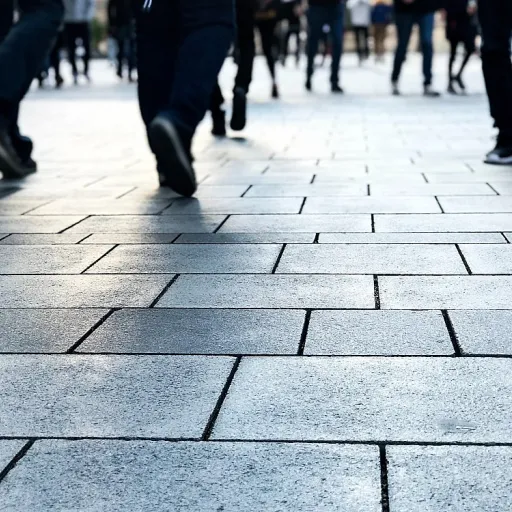
Understanding the importance of temperature screening in New Zealand workplaces
Why temperature screening matters for New Zealand offices
Since the covid pandemic, temperature screening has become a familiar part of workplace safety in New Zealand. Office managers are now expected to help protect employees and visitors from infectious diseases like covid and sars cov by monitoring body temperature at entry points. This process is not just about compliance; it’s about building trust and confidence among people who come to the site each day.
Temperature checks, often using thermal cameras or handheld devices, are a practical way to identify individuals with an elevated temperature—a common sign of fever and possible infection. According to the Centers for Disease Control and Prevention (CDC) and other public health authorities, early detection through screening can help prevent outbreaks and support disease control efforts in the workplace.
How temperature screening fits into workplace safety
- Helps screen employees and visitors for signs of illness before they enter the office
- Supports other control prevention measures like social distancing and face mask policies
- Provides a visible commitment to employee wellbeing and public health
- Can be integrated with access control systems, using facial recognition or thermal imaging cameras for a contactless process
While temperature screening is not a standalone solution, it is a valuable part of a broader safety strategy. Office managers must consider the screening process alongside other best practices, such as regular cleaning, ventilation, and communication about health protocols. The right approach can help reduce the risk of workplace transmission and keep operations running smoothly over time.
For more insights on optimizing office operations and supporting your team, check out this guide on optimizing hotel desk operations for New Zealand office managers.
Key challenges for office managers when implementing temperature screening
Common Obstacles for Office Managers
Implementing temperature screening in New Zealand offices brings several practical challenges for office managers. While the goal is to protect employees and maintain public health, the process can be complex. Here are some of the main issues faced during the screening process:
- Resource Allocation: Setting up thermal cameras or handheld temperature checks at every site entrance requires investment in equipment and staff time. Office managers must balance costs with the need for effective disease control.
- Workflow Disruption: Temperature screening can slow down entry, especially during peak times. Employees may need to queue for their body temperature scan, which can impact punctuality and productivity.
- Accuracy and Reliability: Factors like outdoor temperatures, face masks, and social distancing can affect the accuracy of thermal imaging cameras or forehead temperature checks. Ensuring consistent and reliable results is a constant concern.
- Employee Acceptance: Some people may feel uncomfortable with regular screening or worry about privacy. Gaining employee trust and cooperation is essential for a smooth screening process.
- Integration with Access Control: Combining temperature checks with access control systems or facial recognition technology can streamline entry, but integrating these systems can be technically challenging and costly.
Managing the Screening Process Efficiently
To address these challenges, office managers often look for best practices that minimise disruption and maintain compliance with Centers for Disease Control (CDC) and public health guidance. This includes training staff on the correct use of thermal cameras, setting up clear signage, and establishing protocols for employees with elevated temperature or fever.
Another key consideration is how to manage the flow of people through screening points while maintaining social distancing. Staggered start times or multiple entry points can help reduce congestion and support control prevention efforts during the covid pandemic.
For those planning a larger operational change, such as a corporate move or office redesign, it is worth exploring how to streamline corporate move management for New Zealand offices to ensure temperature screening is integrated smoothly into new layouts or processes.
Ultimately, overcoming these challenges requires a combination of the right technology, clear communication, and a focus on employee wellbeing. By addressing these obstacles, office managers can help ensure a safer workplace for everyone during and beyond the covid pandemic.
Legal and privacy considerations for temperature screening
Balancing Privacy and Compliance in Temperature Screening
When introducing temperature screening in New Zealand workplaces, office managers must navigate a complex landscape of legal and privacy obligations. The process involves collecting sensitive health data, such as body temperature, which is considered personal information under the New Zealand Privacy Act. This means that any temperature checks, whether using a thermal camera, forehead temperature scan, or facial recognition system, must be handled with care.- Consent and Transparency: Employees should be informed about why temperature screening is necessary, how the process works, and what will happen with their data. Clear communication helps build trust and ensures compliance with privacy regulations.
- Data Minimisation: Only collect the minimum information needed for disease control and prevention. Avoid storing individual temperature readings unless absolutely required for public health reasons, such as during a covid pandemic or sars cov outbreak.
- Access Control: Limit who can view or handle temperature data. Secure storage and restricted access help prevent misuse and maintain confidentiality.
- Retention and Disposal: Set clear policies for how long temperature data will be kept. Delete or anonymise records once they are no longer needed for control prevention or compliance purposes.
Choosing the right temperature screening technology
Comparing Temperature Screening Technologies for Offices
When it comes to choosing the right temperature screening technology for your New Zealand workplace, the options can seem overwhelming. The goal is to find a solution that balances accuracy, speed, privacy, and ease of use, while supporting public health and disease control efforts. Here’s a breakdown of the main types of temperature screening devices and what office managers should consider:
- Handheld Infrared Thermometers: These devices are affordable and easy to use for quick forehead temperature checks. However, they require close contact between the screener and the employee, which can increase risk and slow down the screening process during busy times.
- Thermal Imaging Cameras: Thermal cameras can scan multiple people at once as they enter a site, making them ideal for high-traffic areas. They measure body temperature from a distance, reducing contact and supporting social distancing. Advanced models may include facial recognition and mask detection, but privacy and data storage must be managed carefully.
- Access Control Integration: Some systems combine temperature screening with access control, only allowing entry to employees or visitors who pass the check. This can streamline the process and help with contact tracing, but it requires robust IT support and clear communication with staff about how data is used.
Key Factors for Office Managers to Consider
- Accuracy: Devices should be compliant with Centers for Disease Control (CDC) and United States Food and Drug Administration (FDA) guidelines for fever detection. Look for products with proven accuracy in detecting elevated temperature, as false positives or negatives can disrupt operations and undermine trust.
- Speed and Throughput: Consider how many people need to be screened at peak times. Thermal imaging cameras offer fast, contactless checks, while handheld devices may cause bottlenecks.
- Privacy and Data Security: Any system that stores individual temperature data or uses facial recognition must comply with New Zealand privacy laws. Limit data collection to what is necessary for disease control prevention and clearly inform employees about the process.
- Integration with Existing Protocols: The chosen technology should fit seamlessly into your current screening process, including the use of face masks, social distancing, and other covid pandemic measures.
- Support and Maintenance: Reliable technical support and regular calibration are essential to maintain accuracy over time.
Technology Comparison Table
| Technology | Contactless | Speed | Accuracy | Privacy Considerations |
|---|---|---|---|---|
| Handheld Infrared Thermometer | No | Medium | Good (if used correctly) | Minimal data stored |
| Thermal Imaging Camera | Yes | High | Very Good | Potential facial recognition/data storage |
| Access Control with Screening | Yes | High | Very Good | Requires robust privacy management |
Ultimately, the right choice depends on your workplace size, employee flow, and privacy requirements. By carefully evaluating each technology, office managers can ensure effective temperature screening that supports both safety and employee trust during the ongoing covid pandemic and beyond.
Best practices for integrating temperature screening into company protocols
Integrating Temperature Checks into Daily Routines
For office managers in New Zealand, making temperature screening a seamless part of the daily workflow is essential. The process should be straightforward for both employees and visitors, minimising disruption while maximising safety. Start by identifying high-traffic entry points where thermal cameras or handheld devices can be used for quick temperature checks. Ensure that the screening process is clear and consistent, with visible signage and instructions for people entering the site.
Training and Communication
Proper training is crucial for staff responsible for conducting temperature checks. Employees should understand how to use thermal imaging cameras, interpret results, and follow protocols if an individual shows an elevated temperature. Clear communication with all staff about the purpose of temperature screening, how it works, and what to expect helps reduce anxiety and builds trust. Regular updates and reminders keep everyone informed, especially as public health guidance from the Centers for Disease Control (CDC) or local authorities evolves during the covid pandemic.
Maintaining Privacy and Compliance
When integrating temperature screening, it is vital to respect employee privacy and comply with legal requirements. Avoid recording individual body temperature data unless necessary for disease control or contact tracing. If facial recognition or access control systems are used, ensure they meet privacy standards and that employees are aware of how their data is handled. Transparency about the screening process helps maintain trust and supports compliance with privacy laws.
Supporting Other Safety Measures
Temperature screening should complement, not replace, other covid prevention strategies. Encourage the continued use of face masks, social distancing, and regular hand hygiene. Make sure that employees know screening is just one layer of control prevention, and reinforce the importance of staying home if unwell. Integrating temperature checks with broader public health measures creates a safer environment for everyone on site.
Monitoring and Adjusting the Process
Regularly review the effectiveness of your temperature screening process. Gather feedback from employees about their experience and look for ways to improve efficiency. Stay updated with guidance from the CDC, United States health authorities, and local New Zealand agencies regarding best practices for screening and disease control. Adjust protocols as needed to respond to changes in covid or sars cov risks, ensuring your workplace remains safe and compliant over time.
Supporting employee wellbeing alongside temperature screening
Promoting a Supportive Environment During Temperature Checks
Supporting employee wellbeing is essential when introducing temperature screening in the workplace. While temperature checks and thermal cameras are effective tools for early detection of elevated temperature, the process can also create anxiety or discomfort among employees. Office managers play a key role in ensuring that the screening process is both efficient and considerate of individual needs.- Clear Communication: Explain the reasons for temperature screening, referencing public health guidelines from the Centers for Disease Control and Prevention (CDC) and New Zealand authorities. Make sure employees understand that the goal is to prevent disease control issues like COVID-19 and SARS-CoV-2, not to single out individuals.
- Respect for Privacy: Use access control and facial recognition technologies responsibly. Ensure that body temperature data is handled confidentially, and only authorised people have access to screening results.
- Minimise Disruption: Schedule temperature checks at convenient times and locations on site. Use thermal imaging cameras or forehead temperature scanners that allow for quick, contactless screening, reducing queues and wait times.
- Supportive Policies: If an employee is found to have a fever or elevated temperature, provide clear guidance on next steps. Offer support such as paid sick leave or remote work options, and avoid any stigma associated with being screened.
- Holistic Health Measures: Combine temperature screening with other best practices like encouraging face mask use, maintaining social distancing, and promoting hand hygiene. This comprehensive approach helps control prevention of disease and reassures employees that their wellbeing is a priority.













